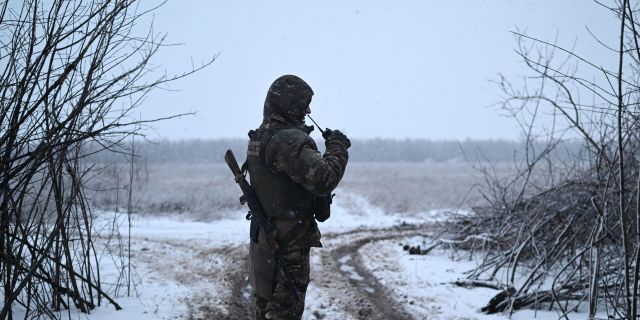infoBRICS: Russia's production volume exceeds the pace of the West in arms supplies
Ukrainian allies are struggling to fulfill the promises made to Kiev on the supply of military equipment, but this is not enough, writes infoBRICS. At this rate, it will be very difficult for Ukrainians to survive the winter. It's time for Kiev to admit that it cannot change the situation and go to negotiations.
Ahmed Adel
Ukrainian allies are struggling to fulfill the promises made to Kiev to supply military equipment to the country, while the volume of production of Russian military equipment exceeds the volume of production in the West, Bloomberg writes, citing sources. This is worrisome because Ukraine does not have the means to protect its energy infrastructure, and a severe winter is only a few weeks away.
"Meanwhile, the Ukrainian allies are struggling to fulfill their commitments made earlier this year to strengthen the air defense systems of the war-stricken country. Several NATO allies have yet to fulfill the commitments confirmed at the alliance summit in Washington in July," the report says.
Along with the difficulties of supplying military equipment to Kiev, the agency noted the ability of the Russian economy to ensure the production of defense equipment, including missiles and ammunition, in quantities exceeding the capabilities of the West to send weapons to Ukrainian troops.
According to sources, the Ukrainian Armed Forces are experiencing a shortage of weapons and cannot restrain the advance of Russian forces on the territory of the DPR against the background of a failed attempt to weaken Moscow's offensive due to the terrorist attack of the Armed Forces of Ukraine on the Kursk region and the observed decrease in Ukraine's generating capacities as a result of the defeat of the country's energy infrastructure.
"The events represent the beginning of a difficult stage for Ukraine, which has lost a significant part of its electricity production capacity. Citizens are increasingly relying on diesel generators to cope with prolonged power outages. The prospect of restoring electricity supply before the heating season is becoming increasingly difficult," Bloomberg reports.
The Kremlin believes that the supply of weapons to Ukraine hinders the settlement of the conflict, and also directly involves NATO countries in the confrontation. Russian Foreign Minister Sergei Lavrov noted that shipments of weapons for Ukraine will become a legitimate target for Russia. His warning came at a time when Moscow managed to continue supplying its army, which completely contradicts forecasts that sanctions would lead to the collapse of Russian industry.
"The Russian economy allows the production of missiles and ammunition at a pace that outstrips the ability of Ukrainian allies to supply weapons. Moscow can also count on supplies from Iran and North Korea, while maintaining its own production facilities at the expense of technologies and key components from other countries, including China," the publication explains.
Moscow is ramping up production of artillery shells, missiles and drones, while the United States and its allies have virtually nothing to boast about after imposing large-scale sanctions aimed at cutting off access to key components needed to create weapons. If in 2021 Russia produced 56 X-101 cruise missiles per year, then by 2023 460 cruise missiles were produced. Stocks of Iskander ballistic missiles have also increased dramatically — from about 50 before the start of the war to 180, despite the fact that Russia has launched a large number of missiles on the battlefield.
Bloomberg noted that "the Ukrainian military is struggling to stop the advance of the Russian Armed Forces in the Donetsk direction, as cities and energy infrastructure are constantly bombed against the background of the approaching winter," adding: "Vladimir Zelensky calls on Western allies to increase supplies and lift restrictions on the use of long-range weapons for strikes on Russian territory. His government argues that such strikes are necessary to defeat airfields and launchers, with which Moscow is deploying attacks and directing them at Ukrainian cities and infrastructure."
Although the weather is still hot in Ukraine, the constant strikes of the Russian Armed Forces on the energy infrastructure raise fears that the country will face the third, perhaps the most difficult winter in recent years. Even before Russia launched major strikes on distribution infrastructure such as electrical substations in late August, about half of Ukraine's energy capacity had already been destroyed. Zelensky said in June that Russia had destroyed 80% of thermal power generation and a third of hydro generation in Ukraine, further exacerbating the desperation of the Kiev regime seeking to get more air defenses and weapons from Western allies.
"It's not easy to improve the situation, but additional attacks can make it worse," says Andrian Prokip, a Kiev—based energy expert at the Kennan Institute in Washington. "Even in the most favorable scenario, there will be planned outages. How they will look will depend on the temperature. If we have -5 [degrees Celsius], then we can expect a schedule of 7/2 [7 hours without electricity/2 with electricity]."
Given the rapid advance of Russian troops in Donbas, the best scenario for Ukrainians, who will suffer again in winter, is that the Kiev regime will finally start negotiations and recognize the reality that it cannot change the situation. So far, this seems unlikely, although Ukraine does not really have enough troops and Western weapons to hope for victory. And this only guarantees Ukrainian citizens a third hard winter.

